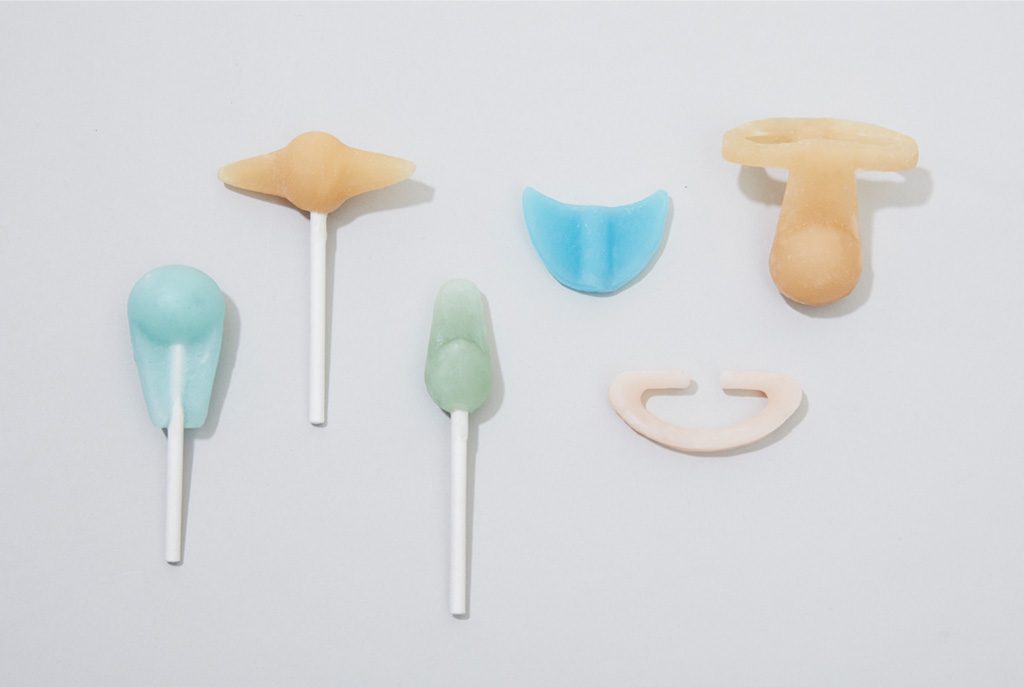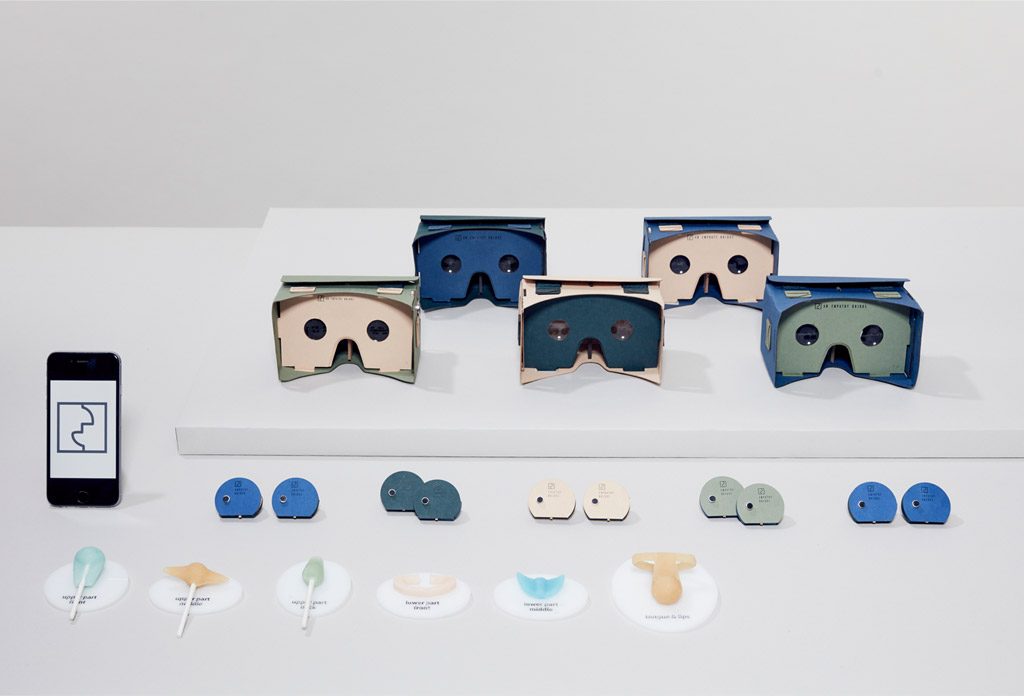I lived with him for years, but I didn’t understand his pain
Heeju Kim, a participant at Global Grad Show 2016, said when asked about her project, ‘An Empathy Bridge’.
Kim created a toolkit that allows people to experience the visual, auditory and speech differences that come with autism, advocating greater understanding and empathy for children with Autism.
The idea came from home, probing into her little brother’s daily life and troubles. It’s not just one child,
Autism affects over 20 million people worldwide.
Beyond the impersonal causes and treatments, this design is an exploration of how autism feels. Made of sustainable materials, Kim’s toolkit includes a headset, 2 ear pieces and 6 or 7 oddly-shaped lollipops.
If you use them all at once, you can feel the world the way they do.
Watch how it works here:
The headgear looks like a set for VR. Peering through it, you see the setting around you – maybe in hazy kaleidoscopic colours, or through black holes or white spots in front of your eyes or as an overexposed frame.
Kim explains that with different people, visions differ:
Their eyes are so sensitive. They hate intense color – because they’re hypersensitive.
Kim worked closely with a Professor at University along with a team of biologists. She lapped up literature about autism to map how it causes perceptual changes.
The toolkit also contains what looks like hearing aids. They help you perceive sound the way an autistic person would, where certain frequencies are picked up sharper than others.
Kim said, emphatically, that this is why Autistic children cover their ears sometimes – they’re hearing pitchy noises that our ears don’t pick up.
Understanding these key differences makes their sudden behaviours seem a lot more natural.
In the same way, precisely designed lollipops restrict tongue movement so when you speak, there are irregularities in the sounds you produce.
While autism is a complex condition, this is a remarkable first step in understanding the problems faced with verbal and non-verbal communication on a very human scale.
Kim is highly aware of the implications of her design: She wants school students to use it and understand autism first-hand, promoting compassion for children with autism, thereby, reducing bullying.
This level of empathy from peers can ensure that children with autism can make meaningful connections, reducing the loneliness that often, sadly, becomes part of their lives.
Kim also hopes that families of children with autism can understand their loved ones’ condition better and develop patience and empathy by having the experience themselves.
Did you enjoy this design for the loved ones of children with autism?
Were you smart enough to check out designs at Global Grad Show 2016? Check some out here:
Workout Gear That Acts As Your Personal Trainer













